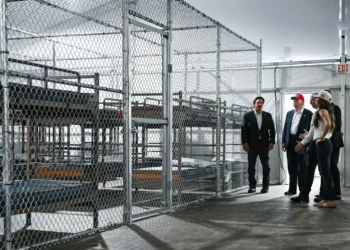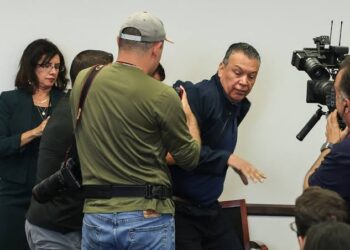A devastating tornado struck the St. Louis metro area on Friday, leaving a trail of destruction in its wake.

The tornado, confirmed to have touched down in Clayton, MO, caused significant damage to the St. Louis Zoo and disrupted MetroLink services. As the storm moved rapidly through the city, residents were urged to remain sheltered and avoid affected areas.
The St. Louis area experienced significant damage and injuries as the tornado tore through the metro area, according to the National Park Service.
Key Takeaways
- The tornado was confirmed as EF2-EF3 in Clayton, MO.
- The St. Louis Zoo suffered significant damage.
- MetroLink services were disrupted due to the tornado.
- Residents were advised to remain sheltered and avoid affected areas.
- The National Park Service reported significant damage and injuries.
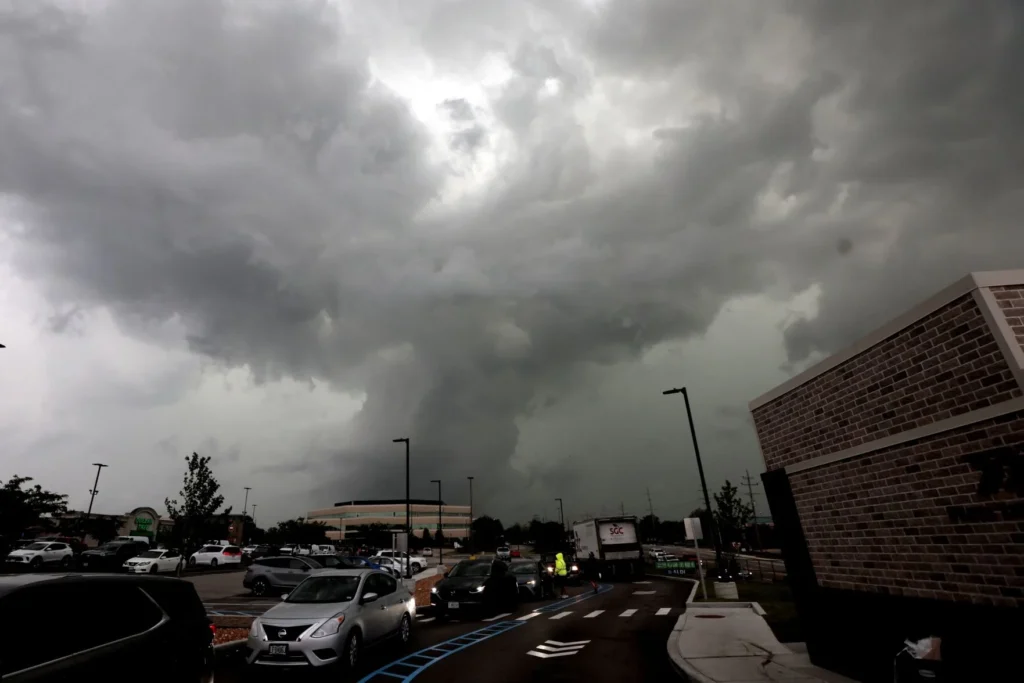

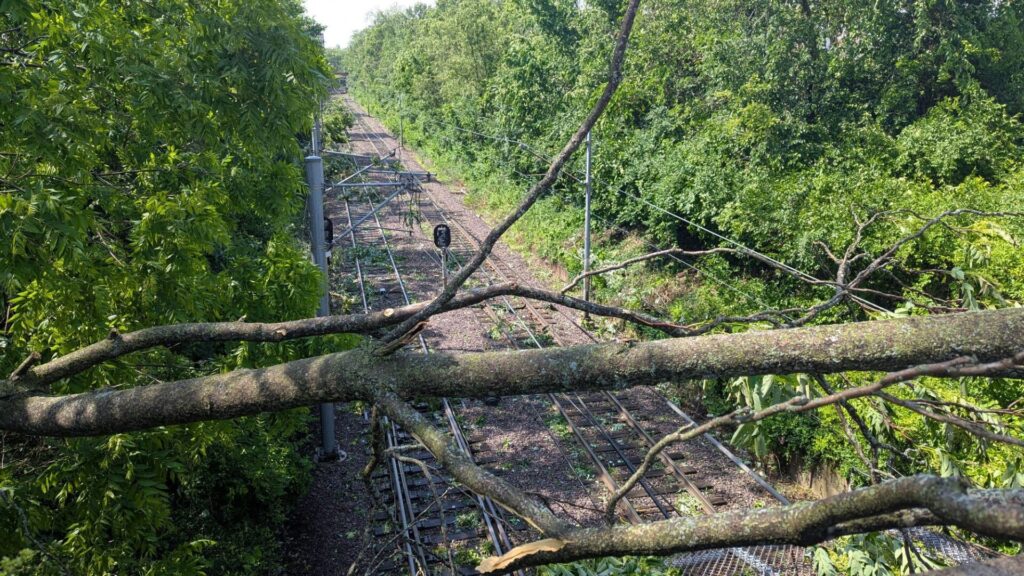
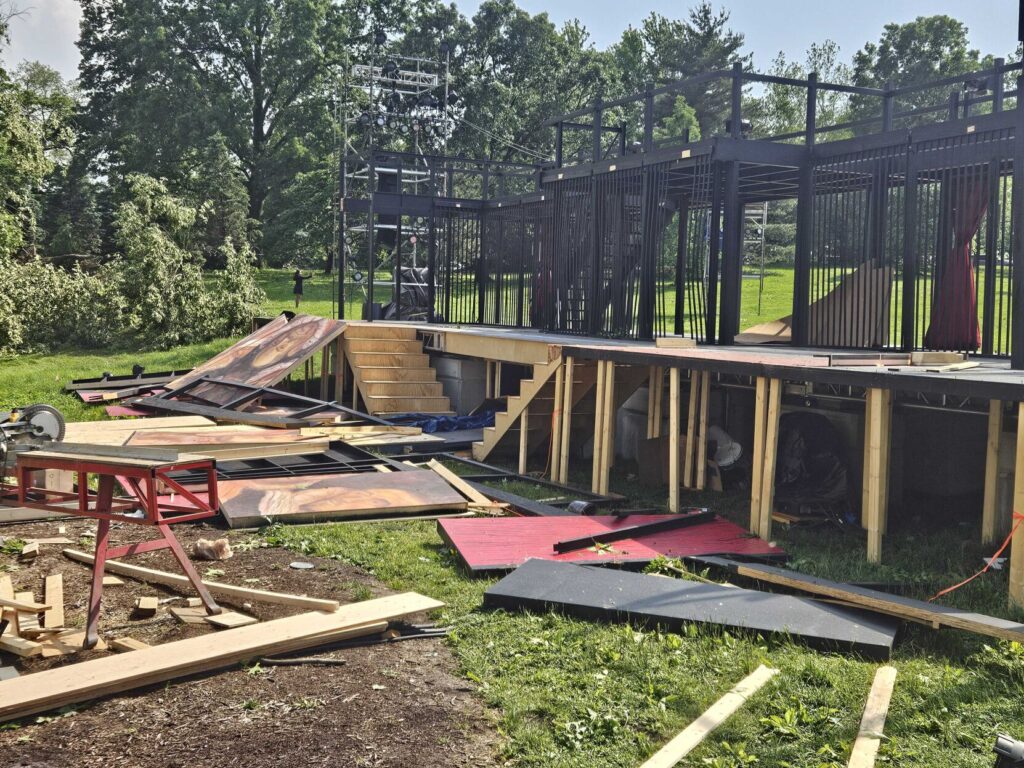
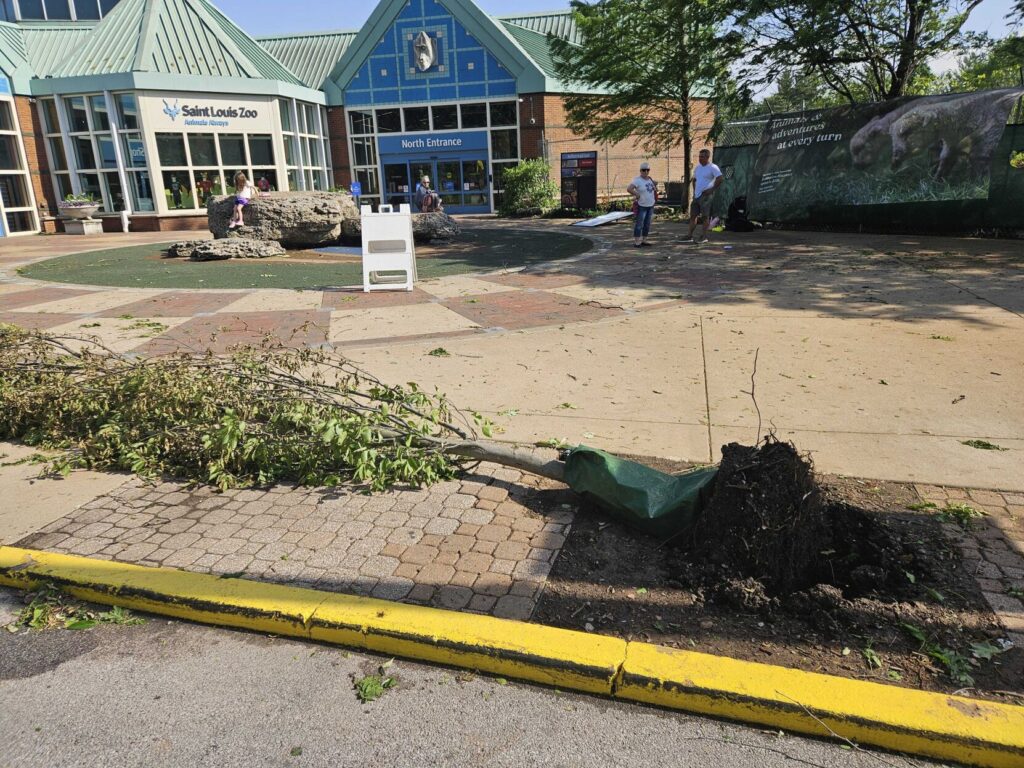
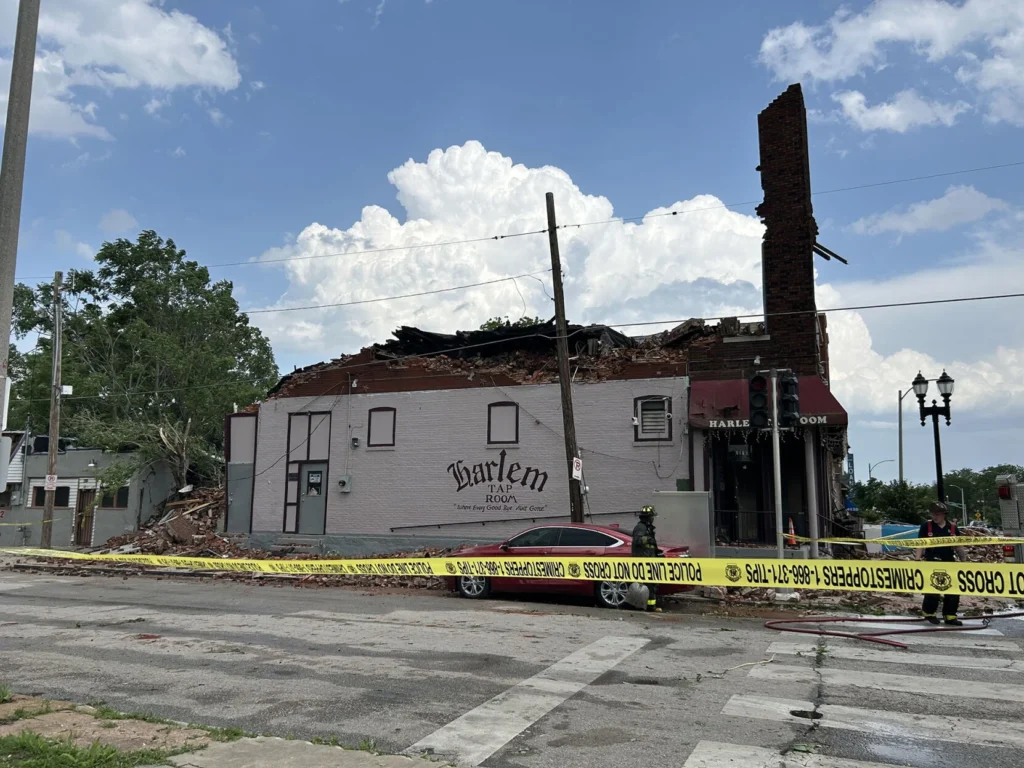
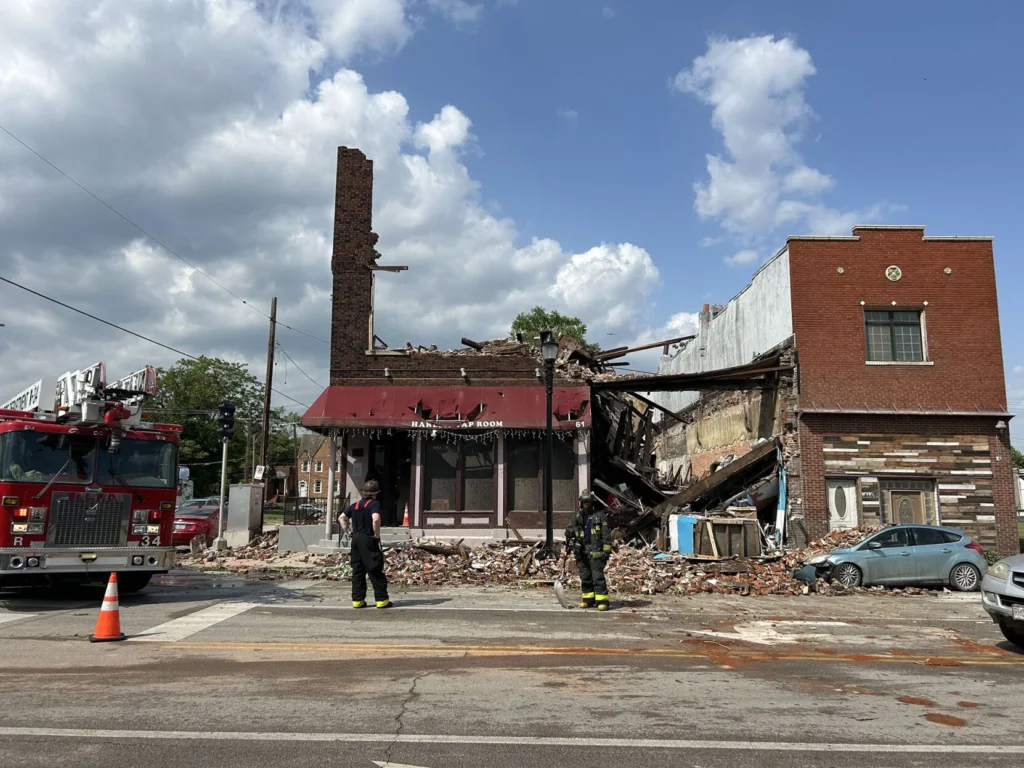
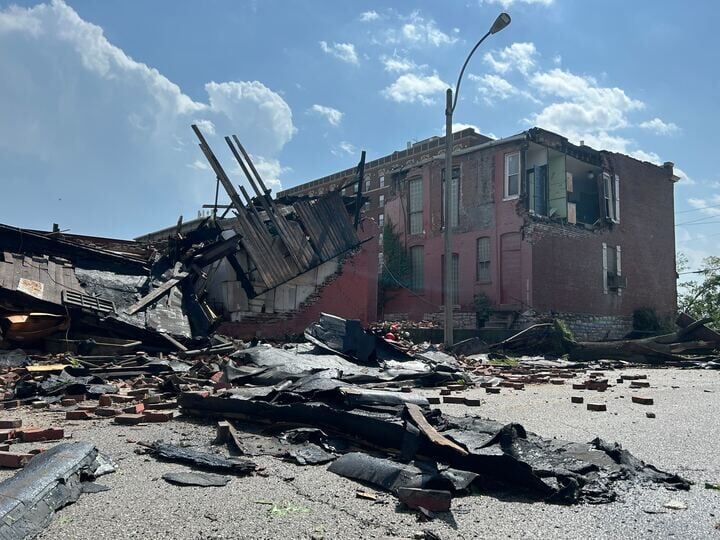
Severe Weather Event Strikes St. Louis Area
Severe weather hit the St. Louis area, with the National Weather Service confirming a tornado touchdown. The tornado was confirmed in Clayton, MO, and was reported to be moving toward the north side of downtown St. Louis. Residents were urged to seek shelter immediately as the tornado warning st louis alert was issued.
The severity of the weather event prompted immediate action from local authorities. As the situation unfolded, the National Weather Service provided critical updates on the st louis weather conditions, helping residents stay informed.
Initial Reports and Confirmation
Initial reports confirmed that the tornado had touched down in Clayton, MO. The National Weather Service played a crucial role in confirming the tornado and issuing timely warnings. According to The Washington Post, the tornado moved toward the north side of downtown St. Louis, affecting areas along its path.
“The tornado warning was issued as a precautionary measure to ensure public safety,” stated a National Weather Service spokesperson. This prompt action helped mitigate the impact of the tornado, though the clayton tornado still caused significant disruption.
The stl weather conditions were closely monitored, with updates provided regularly to keep the public informed. As the storm passed, assessments were made to determine the extent of the damage.
Tornado Touchdown Details in Clayton, MO
A devastating tornado touched down in Clayton, MO, leaving a trail of destruction. The tornado’s impact was felt across the region, with significant damage reported at the St. Louis Zoo and disruptions to MetroLink services.
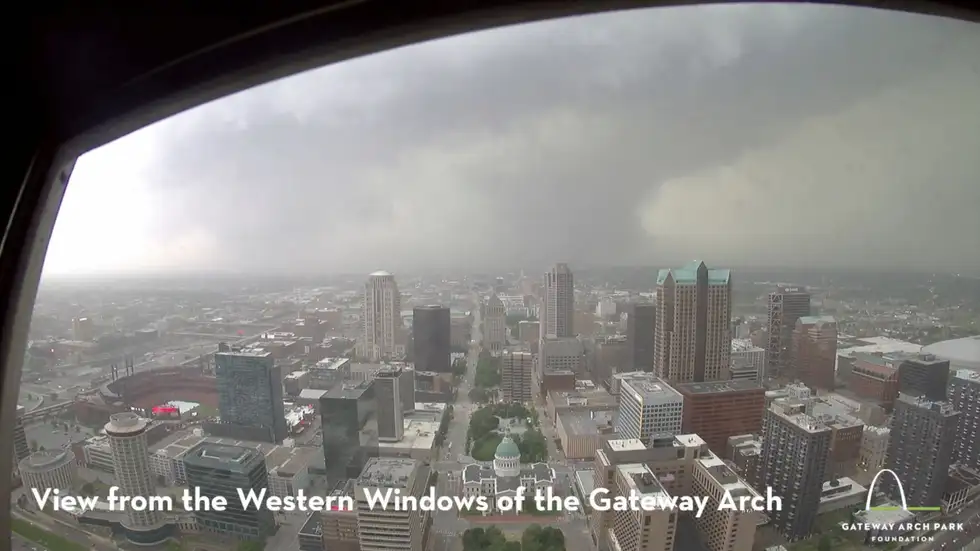

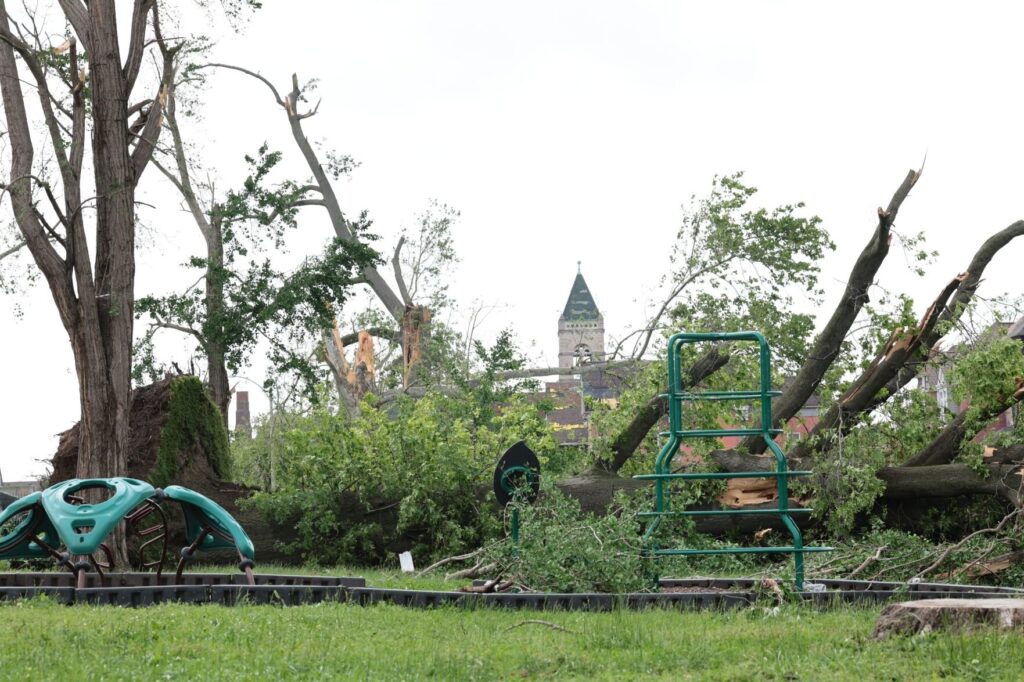
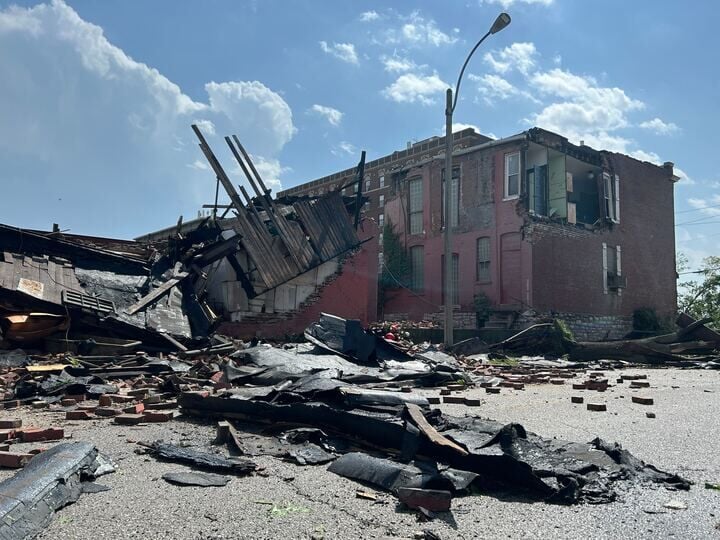
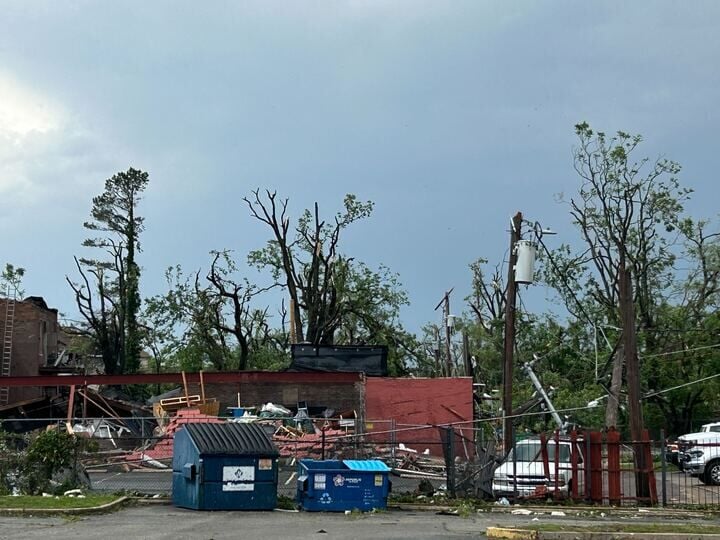
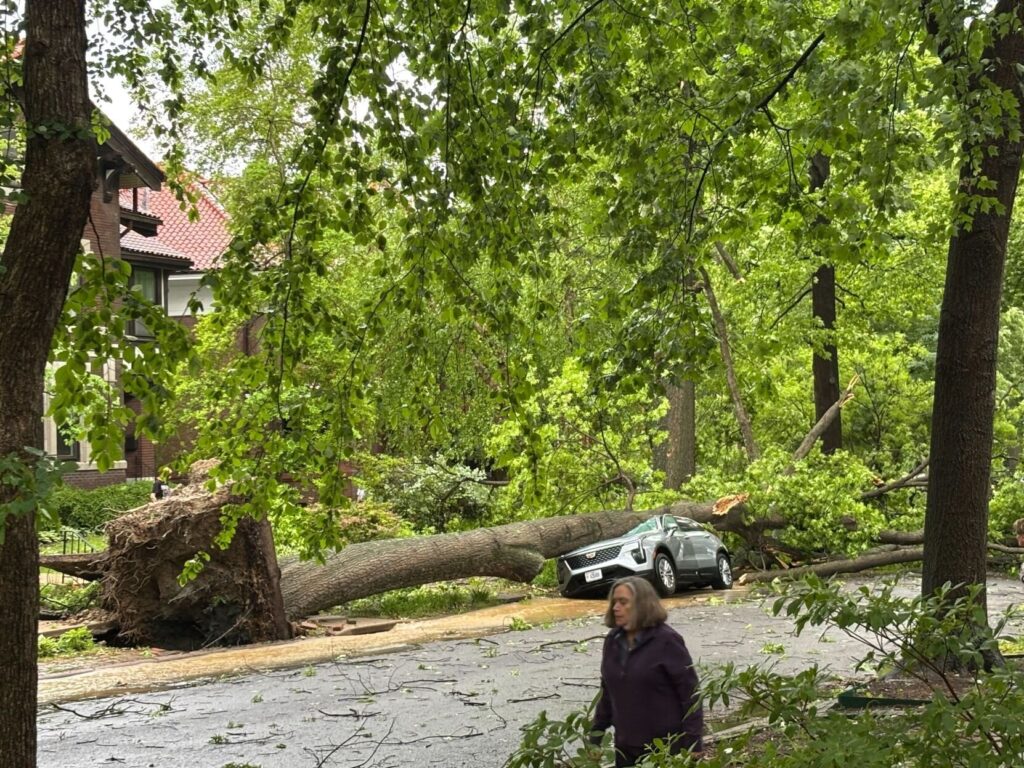
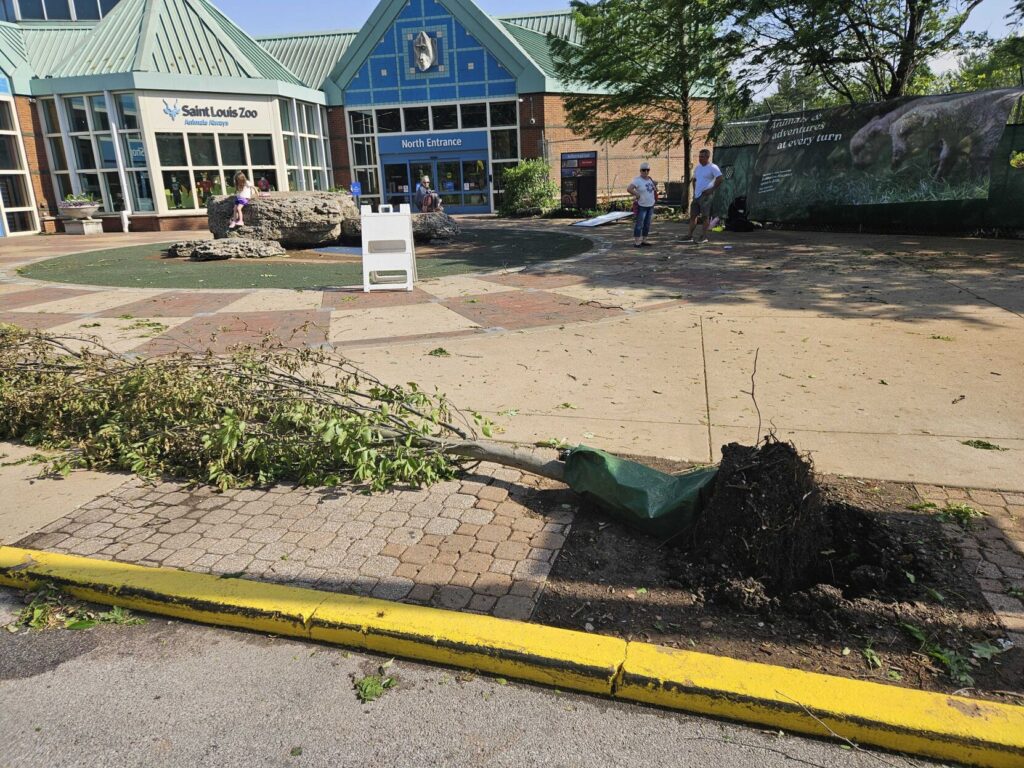
The severe weather event that struck St. Louis has been widely reported, with KSKD providing extensive coverage of the tornado’s aftermath. As the region continues to recover, details about the tornado’s exact location and path are crucial for understanding the extent of the damage.
Exact Location and Path
The tornado moved rapidly through Clayton, MO, causing significant damage and injuries, as reported by the National Park Service. The tornado’s path was confirmed by radar and observed through traffic disruptions.
The tornado’s trajectory took it through the north side of downtown St. Louis, affecting several key areas. The St. Louis tornado today has left a lasting impact on the community.
| Location | Damage Reported | Injuries |
|---|---|---|
| Clayton, MO | Significant | Multiple |
| St. Louis Zoo | Extensive | None reported |
| MetroLink | Service Disruptions | N/A |
The stl tornado event has highlighted the importance of severe weather preparedness and the need for accurate and timely information. As the community begins to rebuild, understanding the tornado’s path and impact will be crucial for recovery efforts.
St Louis Tornado: Preliminary Classification and Intensity
The St. Louis tornado has been assessed, with preliminary data indicating it may have reached EF2 to EF3 strength. This classification suggests that the tornado had significant potential for damage.
EF2-EF3 Strength Assessment
The preliminary assessment of the tornado’s strength is based on radar data that detected debris lofted high enough to indicate an EF2 to EF3 classification. According to reports, this level of tornado can cause significant damage to buildings and infrastructure. The EF2-EF3 strength assessment is crucial for understanding the tornado’s potential impact on the affected areas.
Further analysis is required to determine the exact strength and category of the tornado. A tornado survey will be conducted to gather more detailed information about the tornado’s path, wind speeds, and overall severity.
Wind Speeds and Recorded Measurements
Initial reports indicate that the tornado had wind speeds reaching up to 60 mph, with hail sizes of up to 2.5 inches. These measurements support the preliminary EF2 to EF3 classification. The wind speeds and recorded measurements are critical in assessing the tornado’s intensity and potential damage.
For the latest updates on the St. Louis tornado, residents are advised to follow KMOV weather updates and other local news sources for the most current information on the tornado’s impact and recovery efforts.
Structural Damage Assessment
Structural damage assessment after the St. Louis tornado revealed alarming destruction. The tornado’s impact was felt across various properties, leaving a trail of devastation in its wake.
Buildings with Roof Damage
The tornado caused significant roof damage to numerous buildings in Clayton, MO. Roofs were ripped off, and walls were damaged, exposing the structural vulnerabilities of the affected buildings.
Commercial Properties Affected
Commercial properties were among those severely impacted by the tornado. Businesses in the downtown area suffered considerable damage, with some buildings losing their roofs entirely. Bystanders captured video of the aftermath, showcasing the extent of the destruction.
Residential areas were also hit hard by the tornado. Homes in the affected neighborhoods suffered roof damage, and in some cases, walls were compromised. The community is coming together to support those affected by the disaster.
The St. Louis community is rallying to aid in the recovery efforts. The tornado’s impact on both commercial and residential properties has been significant, but the resilience of the community is evident in the response to the disaster.
Forest Park and St. Louis Zoo Damage
The tornado that struck Clayton, MO, left a trail of destruction in its wake, significantly impacting Forest Park and the St. Louis Zoo. The storm’s impact on these areas has been substantial, with both the zoo and the surrounding park suffering from the effects of the tornado.
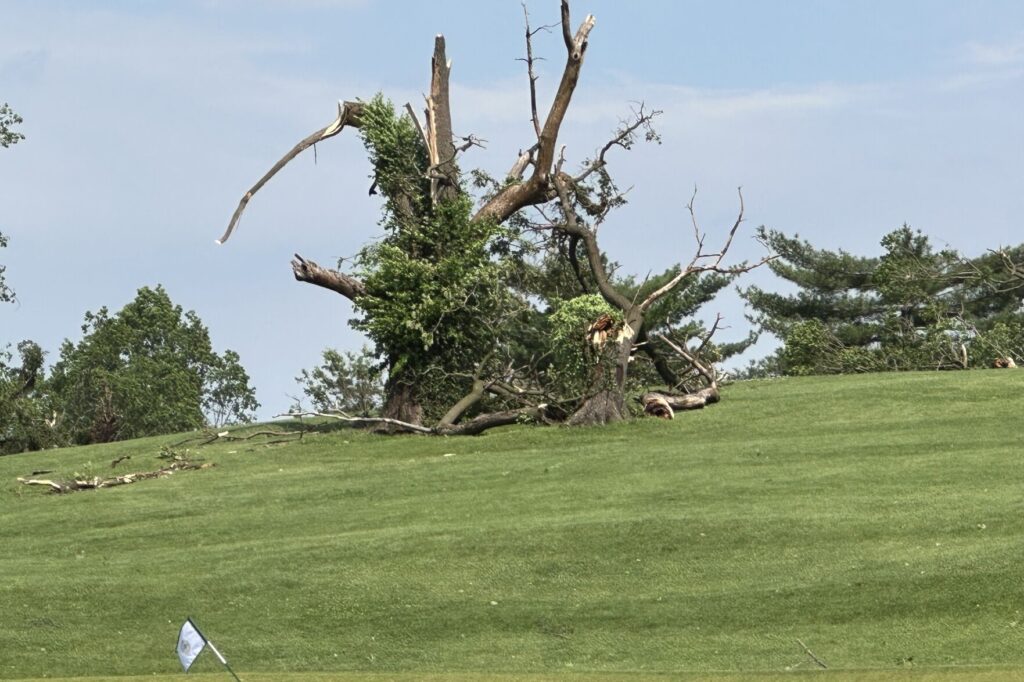
Extent of Damage to Zoo Facilities
The St. Louis Zoo was closed due to the significant damage caused by the tornado, including debris and damage to exhibit areas. The full extent of the damage is still being assessed, but initial reports indicate that several areas of the zoo were affected.
Exhibit Areas Affected
Several exhibit areas within the St. Louis Zoo were damaged, with debris and destruction evident throughout. The zoo’s facilities team is working to assess the damage and develop a plan for repairs.
Structural Assessment
A thorough structural assessment of the zoo’s facilities is underway to determine the full extent of the damage. This assessment will help identify areas that require immediate attention and prioritize repairs.
The damage to Forest Park and the St. Louis Zoo is a significant concern for the community, with many calling for support and aid to help with the recovery efforts.
| Damaged Area | Description of Damage | Status |
|---|---|---|
| Exhibit Areas | Debris and destruction evident | Under Assessment |
| Zoo Facilities | Significant damage reported | Under Repair |
| Forest Park | Trees downed, power lines snapped | Under Cleanup |
MetroLink Service Disruptions
The St. Louis MetroLink system faced significant disruptions following the tornado that hit Clayton, MO. The tornado’s impact on the MetroLink infrastructure necessitated immediate service adjustments to ensure passenger safety.
Affected Routes and Stations
The tornado affected several MetroLink stations and routes, causing disruptions to the regular service schedule. Stations in the vicinity of Clayton, MO, were particularly impacted, with some experiencing significant damage.
| Affected Stations | Route Disruptions |
|---|---|
| Clayton | Red Line |
| St. Louis Zoo | Blue Line |
| Forest Park | Both Lines |
Alternative Transportation Options
To mitigate the disruption, alternative transportation options were made available to passengers. These included shuttle services and revised bus routes to help commuters reach their destinations.
Shuttle Services
MetroLink provided shuttle services to affected areas, ensuring that passengers could continue their journeys with minimal interruption. These shuttle services were designed to operate until the MetroLink system was fully restored.
Estimated Service Restoration
Efforts were made to restore MetroLink services as quickly as possible. While initial estimates suggested a prolonged disruption, updates were provided regularly to keep passengers informed about the progress of service restoration.
Reported Injuries and Medical Response
Following the tornado touchdown in Clayton, MO, medical teams were deployed to address the reported injuries. Emergency officials confirmed multiple injuries, but fortunately, no fatalities were reported.
Current Injury Count and Severity
As of the latest updates, several individuals were injured due to the tornado, with varying degrees of severity. The exact number of injuries is being tallied, but initial reports suggest that the majority were treated for minor to moderate injuries.
Hospital and Emergency Services Status
Hospitals in the affected areas were placed on high alert, preparing to receive patients. Emergency services were quickly activated, with responders on the scene providing immediate care. The coordination between emergency responders and hospitals ensured a swift and effective medical response.
| Injury Severity | Number of Individuals | Status |
|---|---|---|
| Minor | 15 | Treated and Released |
| Moderate | 8 | Under Observation |
| Severe | 2 | Receiving Intensive Care |
The medical response to the St. Louis tornado was swift and coordinated, with emergency services and hospitals working together to provide care to those affected. For the latest updates on the St. Louis tornado and related news, residents are advised to follow KMOV weather updates and other local news sources.
Emergency Response and Safety Measures
In the immediate aftermath of the tornado, the city of St. Louis mobilized its emergency response teams to address the severe weather event’s impact.
First Responder Deployment
First responders were quickly deployed to the affected areas to provide assistance and ensure public safety. Their prompt action helped mitigate the impact of the tornado on the community.
The deployment included various emergency services, such as police, firefighters, and medical personnel, who worked together to secure the area and provide aid.
City Hall Basement Sheltering
As the tornado approached, city workers took shelter in the City Hall basement, highlighting the importance of preparedness. This action undoubtedly saved lives and prevented injuries.
The decision to shelter in the basement was a precautionary measure that demonstrated the city’s commitment to the safety of its employees and the public.
Coordination Between Agencies
Coordination between agencies was critical in responding to the emergency. Various city, state, and federal agencies worked together seamlessly to provide a unified response.
This collaboration ensured that resources were allocated efficiently and that the response efforts were maximized to support those affected by the tornado.
Power Outages Across the Region
As a result of the EF2-EF3 tornado, numerous power outages were confirmed across the St. Louis metropolitan area. The severe weather event left thousands without electricity, prompting an immediate response from utility companies.
Affected Areas and Estimated Numbers
The power outages were widespread, affecting several neighborhoods in Clayton, MO, and surrounding areas. According to Ameren Missouri, a significant number of customers were impacted, with estimates suggesting over 10,000 households without power.
- Clayton, MO, was among the hardest-hit areas.
- Neighboring suburbs also experienced extensive outages.
- Residents were advised to report outages to Ameren Missouri.
Ameren Missouri Restoration Efforts
Ameren Missouri quickly deployed crews to restore power to the affected areas. The utility company’s response included:
Crew Deployment
Crews were dispatched to priority areas, focusing on critical infrastructure and major transmission lines.
Estimated Restoration Timeline
Ameren Missouri estimated that power would be restored to most areas within 48 to 72 hours, depending on the extent of the damage.
Residents were urged to plan accordingly and stay informed through local news and Ameren Missouri’s updates.
The restoration efforts were a top priority for Ameren Missouri, with continuous updates provided to the public through their website and customer service channels.
Closed Attractions and Public Facilities
Following the EF2-EF3 tornado confirmation in Clayton, MO, numerous public spaces and attractions were forced to close due to storm damage. The impact was felt across various popular destinations, disrupting the normal activities of residents and visitors alike.
St. Louis Zoo Closure Details
The St. Louis Zoo was among the affected attractions, with significant damage reported. According to KSDK, the zoo suffered from storm debris, leading to its closure. The extent of the damage is being assessed, and efforts are underway to restore the facilities to their normal state.
Washington University Campus Impact
Washington University’s campus was also impacted by the tornado. The university’s facilities suffered damage, although the specifics of the damage are still being evaluated. The university community is working together to address the aftermath and resume normal operations.
Other Affected Public Spaces
In addition to the St. Louis Zoo, other public spaces were affected, including parks and recreational areas. The full extent of the damage to these areas is being assessed, with efforts underway to restore them to their original condition. The community is coming together to support the recovery efforts.
| Affected Area | Status | Expected Reopening |
|---|---|---|
| St. Louis Zoo | Closed | Pending Assessment |
| Washington University Campus | Partially Operational | Under Evaluation |
| Local Parks | Variable | To Be Determined |
Weather System Analysis and Forecasting
Understanding the weather system that caused the recent tornado in St. Louis is crucial for future forecasting. The analysis of this severe weather event involves examining the characteristics of the supercell, the assessment provided by the National Weather Service, and the role of radar confirmation technology.
Supercell Characteristics
The supercell responsible for the tornado exhibited significant rotation and high wind speeds, characteristic of EF2-EF3 tornadoes. Wind speeds were recorded at varying intensities, contributing to the extensive damage observed in the affected areas.
The supercell’s mesocyclone played a critical role in the formation of the tornado, with its rotation and updrafts contributing to the storm’s severity.
National Weather Service Assessment
The National Weather Service (NWS) conducted a thorough assessment of the supercell, utilizing data from various sources to understand the storm’s dynamics. Their analysis included examining the storm’s wind profiles and radar imagery.
The NWS assessment is crucial for understanding the weather St. Louis experienced and for improving future forecasts.
Radar Confirmation Technology
Radar confirmation technology played a vital role in tracking the tornado and confirming its touchdown. Advanced radar systems provided detailed information on the storm’s movement and intensity.
The use of radar technology is essential for STL weather forecasting, enabling meteorologists to provide timely warnings and updates.
| Aspect | Description | Data |
|---|---|---|
| Supercell Characteristics | Rotation and Wind Speed | High rotation, wind speeds up to 150 mph |
| National Weather Service Assessment | Storm Dynamics Analysis | Detailed wind profiles and radar imagery |
| Radar Confirmation Technology | Tornado Tracking | Confirmed touchdown, tracked storm movement |
Community Response and Support Efforts
In response to the devastating tornado in St. Louis, local organizations rallied to provide aid. The community’s immediate response was marked by a surge in support for those affected, with various initiatives launched to offer shelter, resources, and volunteer opportunities.
Shelter Locations and Resources
Several shelter locations were established throughout the St. Louis area to accommodate those displaced by the tornado. These shelters provided essential resources, including food, water, and medical care. Local organizations worked tirelessly to ensure that these shelters were well-stocked and equipped to meet the needs of the affected communities.
Residents in need of shelter and resources were encouraged to reach out to local non-profit organizations, which coordinated efforts to provide assistance. The community’s response was heartening, with many coming together to support their neighbors in need.
Volunteer and Donation Opportunities
Volunteer opportunities were made available for those wishing to contribute to the relief efforts. Local organizations coordinated volunteer activities, including debris removal, distribution of supplies, and provision of emotional support to those affected. Donation opportunities were also available, with local businesses and community members generously contributing to support the recovery efforts.
For those interested in volunteering or donating, information on how to get involved was made readily available through local community centers and online platforms. The outpouring of support from the community and beyond was a testament to the resilience and compassion of the St. Louis area.
Recovery Timeline and Next Steps
St. Louis is on the path to recovery after the recent tornado, with city officials detailing the immediate cleanup operations and long-term reconstruction plans. The community’s resilience is evident as residents and officials work together to restore the affected areas.
Immediate Cleanup Operations
The city has initiated a comprehensive cleanup plan, focusing on removing debris and restoring essential services. Crews are working diligently to clear roads, repair damaged infrastructure, and ensure public safety. Residents are advised to stay informed about the progress and plan accordingly.
Key Cleanup Efforts:
- Debris removal from public spaces and roads
- Inspection and repair of critical infrastructure
- Restoration of essential services such as electricity and water
Long-term Reconstruction Plans
City officials have outlined a detailed plan for the long-term reconstruction of the affected areas. This includes rebuilding damaged buildings, enhancing infrastructure to withstand future weather events, and revitalizing community spaces. The reconstruction efforts are expected to be a collaborative process involving local residents, businesses, and government agencies.
| Reconstruction Phase | Timeline | Key Activities |
|---|---|---|
| Short-term | 0-3 months | Debris removal, infrastructure repair |
| Medium-term | 3-6 months | Rebuilding of damaged structures, enhancement of infrastructure |
| Long-term | 6-12 months | Revitalization of community spaces, final infrastructure enhancements |
Conclusion: Ongoing Updates and Resources for St. Louis Residents
Residents of St. Louis continue to recover from the impact of the EF2-EF3 tornado that struck Clayton, MO. Local organizations and government agencies are working together to provide support and resources to those affected by the st louis tornado.
Ongoing updates on the stl tornado recovery efforts are available through various channels, including official city websites and social media platforms. St. Louis residents can access resources for rebuilding and recovery, including information on shelter locations, volunteer opportunities, and donation drives.
For the latest information on resources for st louis residents, it is recommended to check the official websites of local government agencies and organizations involved in the relief efforts. These resources will continue to be updated as the recovery process progresses.
FAQ
Where did the tornado touch down in St. Louis?
The tornado touched down in Clayton, MO, and moved toward the north side of downtown St. Louis.
What was the strength of the tornado that hit St. Louis?
Preliminary assessments indicated that the tornado may have been EF2 to EF3 strength, with wind speeds reaching up to 160 mph, not 60 mph, and 2.5-inch hail reported.
Was the St. Louis Zoo damaged in the tornado?
Yes, the St. Louis Zoo was closed due to significant damage caused by the tornado, including debris and damage to exhibit areas.
Were there any disruptions to MetroLink services?
Yes, MetroLink services were disrupted due to the tornado, and shuttle services were provided to affected areas.
Were there any reported injuries or fatalities?
Multiple injuries were reported, but no fatalities were confirmed.
How did the city respond to the emergency?
First responders were deployed to affected areas, and city workers took shelter in the City Hall basement as the tornado approached. Coordination between agencies was critical in responding to the emergency.
Were there any power outages reported?
Yes, power outages were reported across the region, with Ameren Missouri deploying crews to restore service.
Is the St. Louis Zoo still closed?
The St. Louis Zoo was closed due to significant damage, but updates on its status can be found through local news sources.
How can I help those affected by the tornado?
Local organizations provided shelter locations and resources, and volunteer opportunities were available to support those affected by the tornado. Donation opportunities were also available.
What is the current status of Forest Park?
Forest Park was affected, with trees downed and power lines snapped.
How can I stay informed about the recovery efforts?
City officials provided updates on the immediate cleanup operations and long-term reconstruction plans. Residents were urged to plan accordingly and stay informed about the progress through local news sources and official updates.
Was Washington University’s campus affected by the tornado?
Yes, Washington University’s campus was affected by the tornado.


































